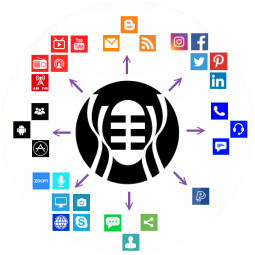You are about to get a website built for your business. Having found a good web design house, you are looking forward to seeing the results of their creative efforts. So far so good.
Once the website is setup, and the customers start rolling in, you will want to make ongoing changes. These could be very small, such as changing a phone number, or adding a news item. New products, or shifts in business direction, will necessitate larger updates to the site. Chances are, though, you will still be happy with the design, and itâs just the text that needs to be changed.
This is the body section area for article from our "Guest Article Contributors"
___________________________________________________________________________________
You are about to get a website built for your business. Having found a good web design house, you are looking forward to seeing the results of their creative efforts. So far so good.
Once the website is setup, and the customers start rolling in, you will want to make ongoing changes. These could be very small, such as changing a phone number, or adding a news item. New products, or shifts in business direction, will necessitate larger updates to the site. Chances are, though, you will still be happy with the design, and it’s just the text that needs to be changed.
While the web design house did a great job, you don’t want to have to go back to them for every change. A hundred small changes in a year will leave you both frustrated, and is not economic for either party.
This is where a content management system (CMS) comes in. Sitting behind the scenes, it gives you the ability to maintain your own site.
No website larger than a few pages should be without a CMS to manage it.
What is a CMS? A content management system is a software package specifically designed to manage a website. It is installed by the web designers, but intended to be used by you.
First off, it provides you with a simple, non-technical way of updating your content. This is typically (but not always) done via a web-based interface that works much like Word does.
Just point-and-click, type in the new words, and hit save. Your site is instantly updated.
Equally easy is adding new pages, deleting old ones, or restructuring the site to match your new business model.
The CMS also automates menial tasks, such as applying the same page layout and appearance across the site. Menus and other navigation are also automatically produced.
Along with the many other administrative tools, this leaves you to concentrate on the words, and not on the technology.
What are the benefits? A content management system makes life much easier in many ways:
* You are no longer dependent on the web designers making changes for you.
* Changes can be made any time they are needed, day or night. This is increasingly important as your business comes to rely on the website as a communications channel.
* All the technical details are simply handled by the CMS, allowing anyone to manage and update the site.
* Multiple staff can keep the site up to date, instead of being restricted to just one person. The CMS will track who is doing what, avoiding potential confusion.
* You can even ensure that each staff person can only update the sections of the site they are responsible for.
* The CMS ensures that all the pages are consistent in design, and will build all the menus and other navigation for you.
* The many other powerful features of the CMS allows the site to grow in sync with your business.
And the cost? The good news is that a lightweight CMS, suitable for a modest-sized website, is not expensive. It can be as low as a few thousand dollars, or simply a complementary part of the web design project.
Of course, if your site is larger, or has complex requirements, the cost of a matching CMS will also grow. After all, you get what you pay for.
Communion Marketing Communications offers Web Design services to BBS clients.









